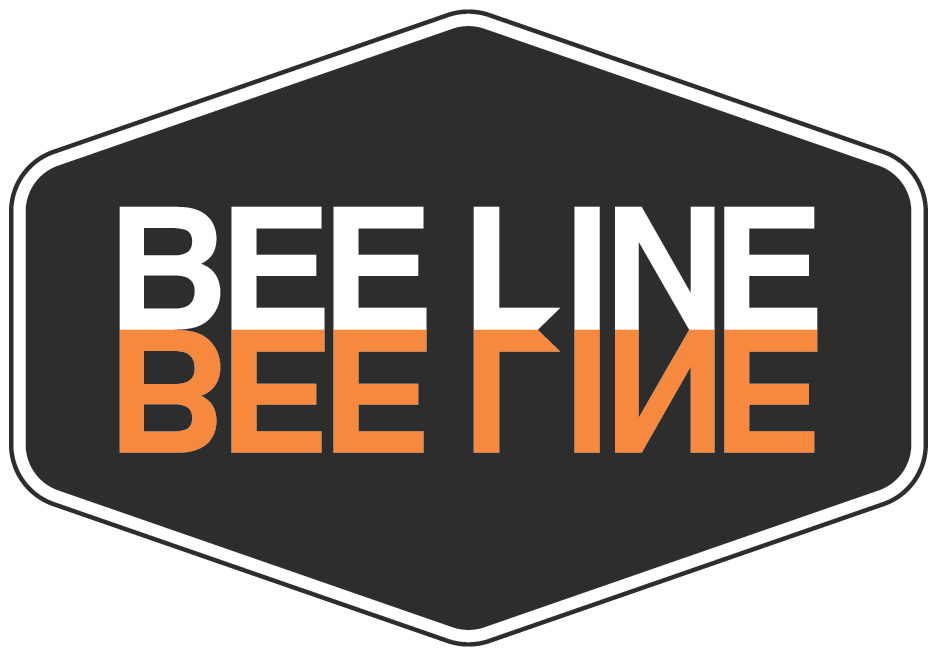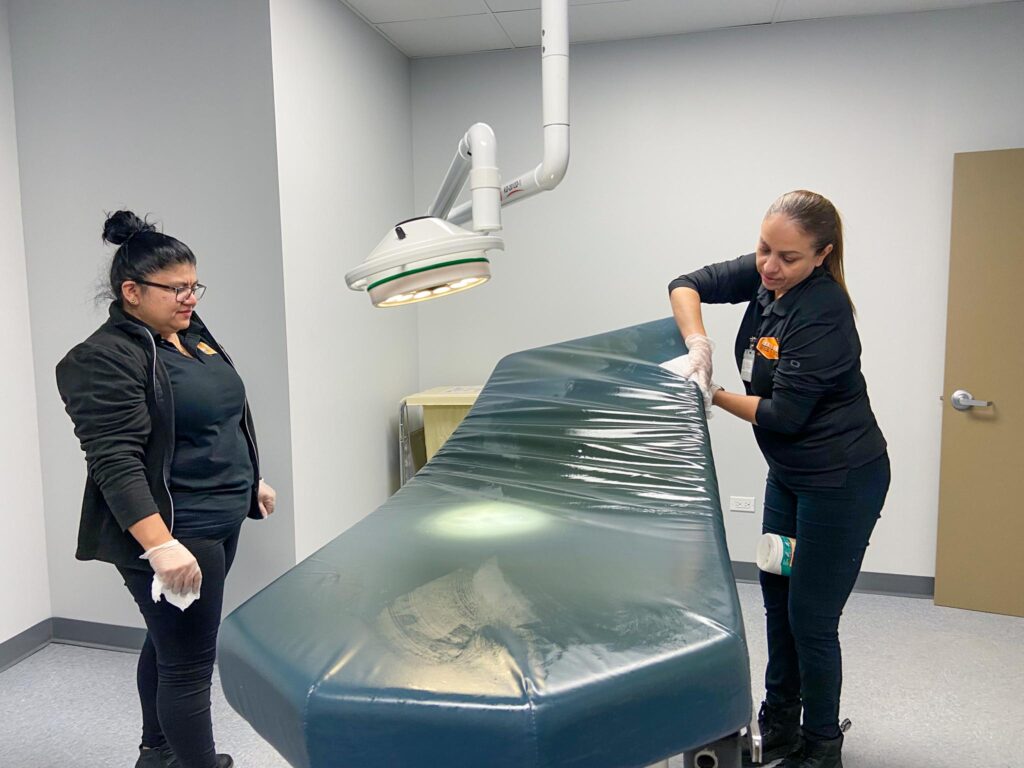In the intricate world of healthcare, cleanliness is not just a preference but an absolute necessity. It protects healthcare workers and patients by keeping bacteria and viruses (like COVID-19) at bay. However, to truly achieve a cleaner environment, your cleaning protocols need to be meticulous and fall within regulatory requirements. To help you create a healthy work environment, from the waiting room to the operating room, it’s important to audit your current cleaning methods and determine whether or not they need some improvement. To get started, we’ll explore why healthcare cleaning is important, along with some ways to evaluate whether your routine cleaning measures are enough to keep your facility safe.
The Importance of Cleaning Standards in Healthcare Facilities
Healthcare environments are not your typical workplaces. They require an unparalleled level of detail when it comes to cleaning and disinfection in order to keep people safe and reduce the risk of catastrophe. Patients come to clinics trying to cure their ailments, expecting expert medical care and an environment that promotes recovery and well-being. They assume that certain hygiene standards will be maintained and harmful pathogens will be eradicated from surfaces. While these things alone make keeping a clean healthcare facility important, there are a few other reasons that you should adopt cleaning best practices. High standards of cleanliness are more than just guidelines; they’re a commitment to excellence and safety, a promise that healthcare providers make to their patients.
Adhere to OSHA and CDC Guidelines
In the healthcare industry, OSHA (Occupational Safety and Health Administration) and the CDC (Centers for Disease Control and Prevention) are your best friends if you want to maintain compliance. Adhering to their guidelines ensures that your clinic operates in a manner that protects both patients and staff while reducing the risk of cross-contamination and healthcare-acquired infections (HAIs). Strict cleaning standards, based on these guidelines, help prevent the spread of infectious diseases and maintain a safe environment.
Optimize Patient Safety
Patient safety is paramount. A clean and sanitary environment reduces the risk of HAIs that could cause serious illness or even death in certain individuals. By implementing medical-grade cleaning standards, you help ensure that patients are not exposed to unnecessary health risks during their stay in your facility. When things aren’t properly cleaned, serious health issues occur more readily.
Increase Staff Hygiene and Productivity
Your healthcare team is on the front lines, and their well-being is as crucial as your patients. A clean and well-maintained facility promotes staff hygiene and productivity. Plus, employees working in a clean environment are less likely to get sick, meaning fewer sick days and more efficient healthcare delivery.
Reduce the Risk of Cross-Contamination
In healthcare, cross-contamination is a scary phrase. It happens when pathogens are transferred from one surface to another, potentially infecting patients and staff. Stringent cleaning standards are your defense against this invisible enemy. They help prevent cross-contamination by ensuring that every surface is thoroughly sanitized with the appropriate disinfectant.
How to Evaluate Your Healthcare Cleaning Standards
Now that we’ve established the importance of high cleaning standards in the healthcare industry, let’s explore how you can ensure your facility meets and exceeds these standards.
Inspect High-Touch Points
High-touch points, like doorknobs, light switches, and handrails, are breeding grounds for germs. Regularly inspect these areas to ensure they are being properly cleaned and disinfected. These are the first places you should start to assess your cleaning standards. In reality, you should wipe them down regularly throughout the day, not just once in the morning or night.
Conduct Regular Audits
Internal audits are your best friend when it comes to maintaining high cleaning standards. Create a checklist that covers everything from patient rooms to common areas. You can also partner with professional healthcare cleaning services that work within the guidelines set by OSHA and the CDC. If you’re not confident in your auditing skills, bring in a professional third-party auditor or a commercial cleaning company that provides audits on their work.
Consider Infection Rates
One of the most direct indicators of your clinic’s cleanliness is the rate of HAIs. Track and monitor these rates and look for public health trends in your community. If infections are on the rise, it’s time to evaluate and enhance your cleaning strategies.
Ask a Nurse or Doctor
Your healthcare providers are on the front lines of patient care and have a unique perspective on cleanliness and hygiene. Engage your staff in conversations about cleaning standards. Ask them about regular cleaning needs or about any feedback from patients and visitors. They may offer valuable insights and suggestions for improvement.
Consider Your Cleaning Solutions
The products and equipment you use for cleaning matter. Ensure that your cleaning solutions are effective against the types of pathogens commonly found in healthcare settings. Review the equipment your cleaning staff uses and make sure it’s up-to-date and in good working condition.
How to Ensure Your Clinic Remains Clean and Germ-Free
Now that you’ve assessed your healthcare cleaning standards, let’s dive into some actionable steps to ensure your clinic remains a bastion of cleanliness and germ-free safety.
Invest in Training: Proper training of your cleaning staff is non-negotiable. They need to understand the importance of their role in maintaining the safety and well-being of patients and staff. Ongoing training ensures that they stay up-to-date with the latest cleaning techniques and safety protocols.
Implement a Robust Reporting System: Encourage your staff to report any cleanliness concerns promptly. Whether it’s a broken hand sanitizer dispenser, an empty soap dispenser, or a spill in the hallway, having a system for reporting and addressing issues ensures that your clinic remains clean and safe.
Prioritize Cleaning Schedules: Develop a cleaning schedule that aligns with your clinic’s operational hours. This ensures that cleaning activities do not disrupt patient care while maintaining a high level of cleanliness.
Promote Hygiene Among Patients: Education is key. Provide information to patients and their families about the importance of hand hygiene, and offer sanitizing stations throughout your clinic. An informed and engaged patient can be an ally in your quest for cleanliness.
Hire a Trusted Medical-Grade Cleaning Company: Trying to manage a plethora of medical-grade cleaning tasks can be difficult, but contamination is not an option. Partner with a medical-grade cleaning company like Bee Line to help ensure your cleaning standards are high and consistent.
In healthcare, cleanliness isn’t just about appearances; it’s about the safety and well-being of everyone who walks through your clinic’s doors. By elevating your cleaning standards, you create an environment where patients can heal, and your staff can work with confidence.
To help you get the most out of your efforts without wasting precious resources, partner with a certified medical-grade cleaning company like Bee Line. As the region’s leading medical-grade cleaning company, Bee Line provides unparalleled attention to detail regarding clinics and medical facilities. Our team is equipped with the knowledge, supplies, and protocol necessary for eradicating common diseases from surfaces and delivering the highest standards of medical-grade cleaning services. To learn more about our commercial cleaning procedures, receive a quote, or reach our emergency services, contact Bee Line today by calling 312-BEE-LINE.
About The Author
Jamie Henry
author
Jamie established Bee Line in 1997 and hasn’t looked back since! She is originally from Chicago, but lived in Florida for 10 years, and claims that she is a “displaced New Yorker” despite never living there. In her free time, you can find Jamie walking her pup, Moose, around the city, and learning new hobbies, like learning to golf and piloting planes! Her favorite part of leading Bee Line is working with her team to grow the company and cultivate a positive and thriving culture. Jamie won a 19th Annual Enterprising Women of the Year Award, one of the most prestigious recognition programs for women business owners in the U.S. and globally!




